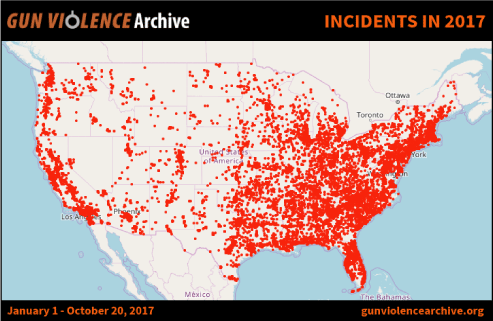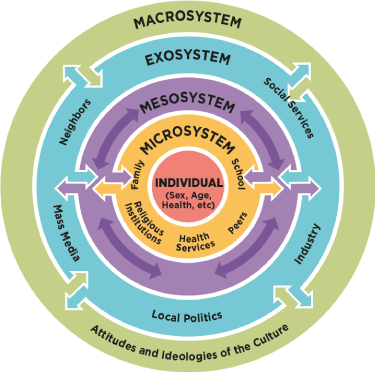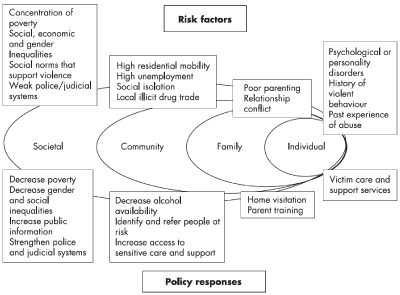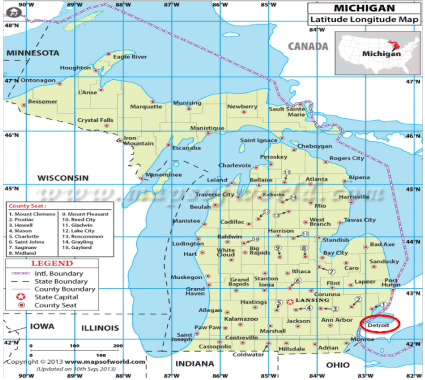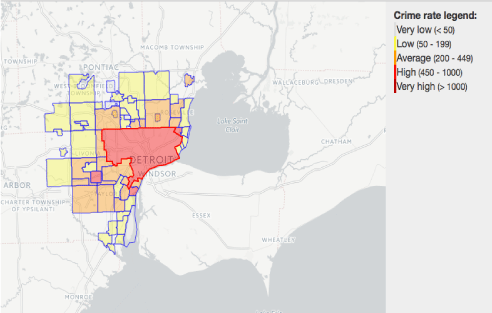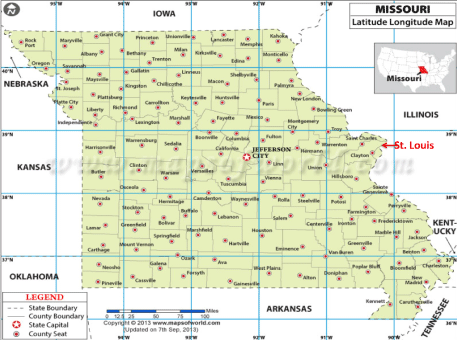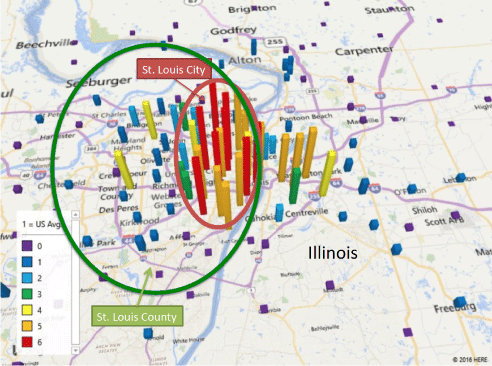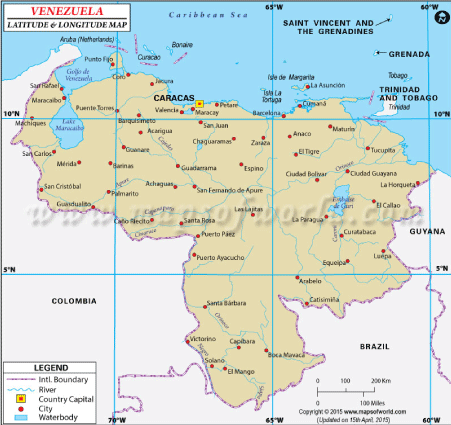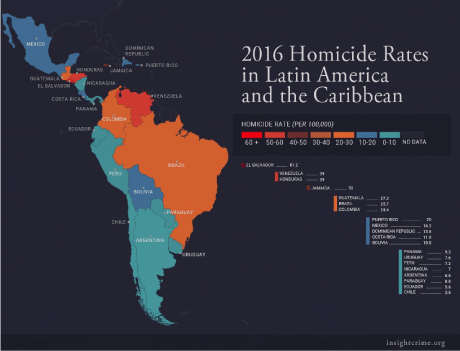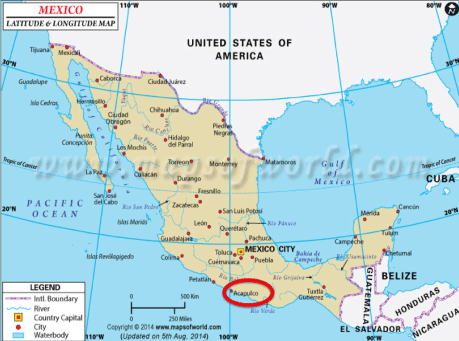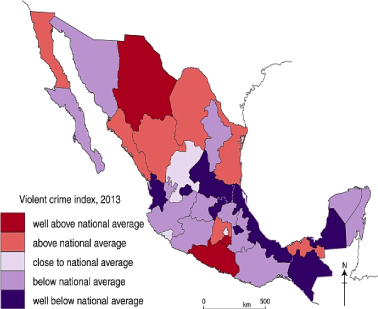A Comparative Study of the World's Most Dangerous Cities: Violence as the Ultimate Public Heath Challenge
Abstract
With the pace of rapid urbanization, people not only live in cities, but in increasingly larger cities, resulting in major changes in daily living and public health conditions. Nation states have made enormous strides in their efforts to improve their population's health conditions, from prenatal care and immunization to hospital care, extending life spans previously thought unimaginable. Unfortunately, interpersonal violence has become one of the major public health issues in major cities in nations with high homicide rates across the globe, with consequences for both direct and indirect victims. Violence is a complex, multifaceted problem, and the result of the complex interplay of individual, relationship, social, cultural and environmental factors. Its damage goes beyond the intangible suffering and impacts on quality of life and well-being, violence impedes human and economic development. For decades, research has demonstrated that public safety, or the lack thereof, is a public health issue. This study focuses on the World's most dangerous cities: Caracas Venezuela, Acapulco Mexico, Detroit Michigan and St. Louis Missouri in the U.S. Building upon the Bronfenbrenner ecological model, this study investigates the risk factors of violence in these four cities through the lenses of their historical, political, economic and social contexts. The study concludes with an analysis of the multi-faceted collateral damage done by the increase in urban violence in each city and with a multilevel intervention approach to mitigate urban violence, from the perspective of public health.
Keywords
Violence, Public health, Inequality, De-industrialization
Introduction
Violence has always been part of the human experience that affects people of all ages. In 2007, violence was one of the top 10 leading causes of death in the United States for people from birth to age 64 years [1]. The World Health Organization (WHO) defines violence as: The intentional use of physical force or power, threatened or actual, against oneself, another person, or against a group or community that either results in or has a high likelihood of resulting in injury, death, psychological harm, maldevelopment or deprivation [2]. Its impacts, in various forms, are in all parts of the world. Violence can exert both health and economic consequences. In the United States alone, the impact of violence on health services for acute medicine, surgery, and psychiatry is repeatedly over $5.6 billion a year [3]. Particularly in urban areas, fear of violence undermines people's health and well-being, which in turn reinforces the necessity, and presence of violence [4].
"Almost all violence is predictable and therefore preventable" [2].
With the pace of rapid urbanization, people not only live in cities, but in increasingly larger cities, resulting in major changes in daily living and public health conditions. Nation states have made enormous strides in their efforts to improve their population's health conditions, from prenatal care and immunization to hospital care, extending life spans previously thought unimaginable. Unfortunately, interpersonal violence has become one of the major public health issues in major cities in nations with high homicide rates across the globe, with consequences for both direct and indirect victims. For decades, research has demonstrated that public safety, or the lack thereof, is a public health issue. This study focuses on the four most violent national and international cities of Detroit, MI; St. Louis, MO; Caracas, Venezuela; and Acapulco, Mexico (Table 1). Data and statistics are compiled through a comparative analysis of both governmental and non-governmental databases and serve to provide the rationale for the four cities chosen for this research. Our focus is less on petty crime, but on homicides in which citizens meet death on the streets where they live. This chapter concludes by suggesting an epidemiological triangle, which depicts a three-level violence prevention program from the public health perspective and a discussion of risk factors and policy implications at multiple levels.
While violence is prevalent across the globe, the culture of normalized violence in the U.S, the most advanced nation in the world, cannot be overstated. Largely due to lax gun laws and the lack of political will, the human costs of America's culture of violence and violence incidents just in 2017 are shown in Figure 1.
Violence from an Ecological Perspective
Violence is a complex, multifaceted problem, and the result of the complex interplay of individual, relationship, social, cultural and environmental factors. Prior research suggests that certain demographic factors significantly increase the risk of collective violence, especially civil conflict. These factors include having a high proportion of young adults (more than 40%, referred to as a "youth bulge"), high levels of youth unemployment, rapid rates of urbanization, low availability of cropland (and associated disputes over farmland distribution) and scarcity of renewable fresh water [5]. In addition, having access to weapons, particularly firearms, is an important factor in violent outcomes, particularly deaths from homicide, suicide and unintentional shootings [6].
While biological and other individual factors explain some of the predisposition to aggression, more often these factors interact with family, community, cultural and other external factors to create a situation where violence is likely to occur [2]. Theoretical models [7-10] have examined the role of income and societal inequalities as factors directly related to violence. Inequality between groups in society is an important risk factor for violence, especially collective violence [6]. Wilkinson and Pickett have found evidence that homicide is associated with income inequality (as measured by the Gini indexa) in 23 high-income countries [10-12]. The causes of violence that are deeply rooted in the social, cultural and economic fabric of human life are beyond direct observation.
Bronfenbrenner's [13] ecological model of human development for understanding violence has been used extensively by public health and other practitioners and researchers (Figure 2). The framework allows an examination of the multiple levels relating to violent behavior: Each operates in relation to others with individual factors modifying and interacting with relationship, community and societal factors [6]. Building upon the Bronfenbrenner ecological model, five interrelated levels and synergistic factors contribute to interpersonal urban violence: Macro- and exo-social system factors that cause violence, meso-social system factors that foment violence, micro-social system factors that facilitate interpersonal urban violence, and finally the individuals who take violent action. Macro-social system factors include the general attitudes and ideologies of the culture. Exosystem level is usually informed by the macrosystem factors and includes, the increase in social services due to wealth polarization; the pace of industrial and technological change and its impact on high skilled labor with resultant loss of jobs among low-skill workers; the paradox of more schooling with fewer employment opportunities; disinvestment in poor urban communities and neighborhoods through urban renewal and gentrification; the increase in lifetime aspirations and expectations and the impossibility of meeting them. The meso-social system level highlights: Prevalence of low wage work in a high-tech economy; lax gun laws; increased density in poor areas of cities; marked increase in urban segregation; pervasiveness of aggressive ethos in masculinity; and, changes in the local and international drug markets. The micro-social system level includes: An increase in the number of firearms; massive incarceration rates; changes in family structure; both legal and illegal immigration; loss of importance of religion in daily life; lack of family structure and poor parenting; increased gang affiliation; antagonistic relationships between legal authorities and community residents; alcohol consumption; and, lack of positive outlets to articulate feelings and frustrations. Building upon this ecological model, Rutherford and his colleagues summarize the risk factors for violence are at the individual, relationship, community, and societal levels (Figure 3). This model provides a dynamic perspective in identifying the risk factors of violence at multiple levels and their corresponding policy responses.
The Relationship between Violence and Public Health
Thirty years ago, the combination of violence and public health was an emerging field. Starting in the U.S.A, the risk of homicide and suicide reached epidemic proportions during the 1980s among specific segments of the population including youth and members of minority groups [14]. There is increasing recognition of the public health importance of understanding and preventing violence. Violent behavior shows similar features to infectious diseases-being capable of being learned from one generation to the next, from one community to another [15]. First, violence is among the leading causes of death for people aged 15-44 years. This statistic may include extreme violence being experienced in places where the lives of children and civilians are being lost daily through bombs and lack of basic amenities, and the sort of violence experienced in developed countries who do not consider themselves to be 'at war'- the violence in workplaces, schools, and streets [15]. It was estimated that 1.6 million people worldwide died as a result of violence, an overall age adjusted rate of 28.8 per 100,000 [6]. The effects of violence are disproportionately felt by low and middle income countries. In African and Latin American regions of the world, homicide rates are nearly three times higher than suicide rates [16].
Second, the direct and indirect costs of violence on people's long-term physical, mental and sexual health, as well as the major negative economic impact of violence at a global level, also make violence a major public health issue. Violence causes many more injuries than deaths. Mental trauma from exposure to violence has been scientifically shown to increase a person's risk of adopting violent behavior themselves, meaning that violent behavior transmits and spreads based on exposure-just like an epidemic disease [17]. The economic costs of violence include the direct costs of medical, policing and legal services, and the indirect costs of lost earnings and productivity, lost investments in human capital, life insurance costs and reduced quality of life [6]. In the U.S., violence is estimated to cost the equivalent of nearly 3.3% of the Gross Domestic Product (GDP) [18]. The costs of violence in England and Wales have been estimated at US $40.2 billion annually. These staggering costs across the world, however, are borne by the public sector [18].
Another reason why violence has become a greater focus for public health is the increasing acceptance within the public health community of the importance of behavioral factors in the etiologyb and prevention of disease [14]. Public health communities around the globe have a long tradition of working for health improvement, transcending narrow economic and political concerns and the self-interest of individuals, ethnic groups, religions or countries [19]. A public health focus is placed on preventing violence before it occurs; employing a scientific approach to understand the problem and what action can be taken to prevent it; taking a population perspective that places an emphasis on broad-based changes in communities and society that benefit the largest number of people; and, working across sectors of the broader society (eg, health, justice, education) [1]. Moreover, public health complements existing approaches to violence by recognizing that violence is a multifaceted problem. It focuses on changing the behavioral, social, and environmental factors that give rise to violence [16].
Subsequent sections of this research focus upon the four national and international cities with the top murder/violence rate. The four cities include, Detroit Michigan, St. Louis Missouri, Caracas Venezuela and Acapulco Mexico.
The Cities of Focus: Analysis
Detroit, Michigan, USA
"The auto industry was like Silicon Valley in the 1980s. It was doing so well that Detroit officials didn't see a need to do anything differently" Kevin Boyle, as cited in New York Times [20].
The city of Detroit, the largest city in the state of Michigan (Figure 4), settled in 1701, became a world-class industrial powerhouse, the capitol of automobile industry and the fourth largest American city by the mid 20th century [21]. As a thriving hub of commerce and industry, the city spread along Jefferson Avenue, with multiple manufacturing firms taking advantage of the transportation resources afforded by the river and a parallel rail line [22]. Detroit was once referred as the Paris of the West for its architecture, and for Washington Boulevard, electrified by Thomas Edison [21]. However, today's Detroit is filled with abandoned factory plants, economic bankruptcy, urban poverty and violence. A 2017 Forbes report named Detroit as the most dangerous city in the United States, with a violent crime rate (homicide) of 2,137 per 100,000 population [23]. Citing FBI survey data, the report found that the city's metropolitan area had a significant rate of violent crimes: Murder and non-negligent manslaughter, rape, robbery, and aggravated assault, and over 65% of homicides in the city were drug related [24].
Detroit's economy
Detriot's economic, social and demographic landscape was largely shaped by the Big Three of auto-industry (comprised of Ford, General Motor and Chrysler). Detroit became the Motor Metropolis, going from twenty square miles to several thousand square miles. The Detroit metropolitan area emerged as one of the largest in the United States [25]. Underneath this auto colossus, racial segregation and inequality in housing and employment threatened the city constantly. Decades later, the decentralization of industry had profound effects on the urban geography and on the working-class population of the city. Because of the founding of United Automobile Workers (UAW) union in 1941 and the industry's racially and ethnically diverse labor force, the Big Three started to decentralize facilities and relocate throughout the country in response to labor unrest and strikes [25]. Following World War II, the area witnessed suburban expansion as white-collar workers and elites moved out from the city [26]. The spread of the auto-industry outward in the 1950s was a first stage in the mass migration of industry to low-wage regions of the United States and, increasingly, the world [25]. The auto-industry's intellectual axis also relocated from the auto city to Silicon Valley, CA [26].
Tensions between the races have been high since the 1940s, especially after African Americans from the South began moving to Detroit in search of work at automobile factories. The ultimate torrent was the 1967 riots. Due to the social unrest and the effects of de-industrialization, the city experienced major economic and demographic decline. Businesses followed their customers. Thousands of houses were abandoned as the city's population plunged. The movement of jobs out of the city accelerated the process of suburbanization, as autoworkers, who could move followed their jobs. During the 1950s, the city lost 363,000 white residents while it gained 182,000 African American residents and the number of African American population kept increasing (see Table 2) [20].
African Americans were hit hardest by the loss of jobs in the central city at that time, largely because they were closed out of nearly all white neighborhoods [27]. In the 1960s, social scientists began to observe what they called a "spatial mismatch", between working-class minorities and jobs. Most jobs were being created in outlying communities that excluded minorities [28]. Businesses, such as small shops, bars and restaurants that catered to workers during their lunch breaks or at shift change shut their doors [27]. People who lived in the neighborhoods near closed plants moved. The center city was downsizing. The loss of property taxes, wage taxes, and population was devastating, particularly as urban governments faced the costs of providing education and social services to an increasingly impoverished population [25,28].
With the rise of globalization, the auto-industry fell on even harder times in the 1970s and the 1980s. The motor city struggled to overcome new challenges, including economic recession that grew with the combination of oil shortages, rising fuel prices, and intense international competition, particularly with auto-manufacturers in Japan and Germany [25].
Detroit's former economic strength has been in unprecedented decline, and the city's depleted economic base, political instability, massive debt burden, and below-average financial management, along with the 2008-2009 recession, ultimately deteriorated its credit profile. During the most recent recession, Detroit's unemployment rate reached a peak of 27.8% in July 2009 and averaged 24.6% from January 2009 to June 2010 [29].
In part due to the collapse of the auto-industry and foreclosure crises, Detroit soon became the largest U.S. city with the weakest economic base. The unemployment rate was 16.3% in May 2013, more than double the U.S. average and higher than that of any other large city in the nation [29]. The poverty rate of 39.3% was the second highest in the country, well more than double the national poverty rate of 15.5% [30]. The student enrollment at Detroit's public schools drastically declined to 52,981 in 2012 from 164,496 in 2002 [20]. The city experienced severe out-migration in the past few decades, which had a negative impact on real estate values. Long-struggling Detroit's credit rating had fallen further during the height of the recession, only to continue weakening to the point of insolvency. On July 18, 2013, Detroit filed for Chapter 9 bankruptcy protection with the total debt burden was estimated to be about $18 billion [29].
Crime in Detroit
The consequences of economic desperation and abandoned spaces, representing poverty, unemployment, and city-wide injustice, include urban violence. The crime rates in 2015 are mapped in Figure 5. Because the redder colors indicate the very high crime rate, we can see a very high concentration of violence in the Southeastern area of Detroit comparing to the surrounding areas. In 2009, 31% of Detroit Public School students reported being in a physical fight, 20% missed school because they did not feel safe, and 9% carried a weapon [31]. As one young schoolgirl related:
"I dream about my school getting broken into, somebody coming in who's not supposed to. Stuff like that just goes through my mind" [32].
The homicide rate among youth aged 15-24 was 80.5 deaths per 100,000, a rate more than 5 times the rate outside of Wayne County [31]. In 2013, a total of 14,500 violent crimes were reported in Detroit [32]. Murders and shootings spiked in the first quarter of 2017 compared to the same period in 2016, with 66 homicides from January 1 to March 26, a 14% increase over the same period in 2016 [24]. Unsurprisingly, homicide was one of the leading causes of death for both African Americans and Latinos, with 19.9 and 6.6 homicides per 100,000 population [31]. The rate can climb to 28.4 per 100,000 for Latino men ages 20-24. HIV rates among African-American and Latino youth were high and growing rapidly [31]. Homelessness in Detroit was unrivaled by other US cities, with a rate of 216 per 10,000 residents [31] - nearly twice as high as the second-ranking urban area in the United States. Threatening the lives in Detroit, violence, particularly homicide is a public health issue.
Detroit's violent crime problem is inextricably linked to its recent bankruptcy and conditions that led to it. Detroit police officials pointed out that almost 50 percent of violent crimes are gang related, and the majority of the crimes committed have a narcotic nexus [30]. The inextricable role of poverty and a diminished opportunity structure were and are omnipresent. Many of the homicides committed are not random and are directed or committed against known victims [30]. Over the years, Detroit produced a number of infamous corporate gangs with colorful names like the Purple Gang and YBI (Young Boys Incorporated) [33]. While the Purples dominated the bootleg trade during Prohibition, YBI sold copious amounts of cocaine during the 1980s [33]. More recently, researchers find that Detroit's gangs are primarily neighborhood based, rather than franchises in some national crime network [33]. Most local gangs in Detroit revolve around a school district or some other neighborhood affiliation [33]. With failing social institutions and few economic opportunities, young people join gangs to seek survival and self-identity.
Beyond widespread poverty, unemployment and a non-functioning education system, the city's shrinking budget and decline in services led to blighted houses, failing streetlights and lack of reliable transportation. Detroit has the highest youth unemployment rate (30 percent) and adult unemployment rate (17 percent) of any of the twenty-five largest metro areas in the U.S. [33]. The disconnection between youth and employment is especially concentrated in the African American community, with disconnection rates of 25.3 percent, as compared with 13.5 percent of whites and 19.2 percent of Latinos [33]. The problem of violence is not just an economic issue. The communities are at risk. Traditional socialization agents such as the church, labor unions, and local schools are undermined in Detroit [33], so that gang membership is a primary attraction for both group affiliation and personal safety among the young.
St. Louis, Missouri
"St. Louis had an abundance of what regional economic growth theorists…argue is the most important ingredient of success for post-industrial America: A large population of educated, professional, creative types who dream up the innovations that drive growth and profits"-Feldman [34].
St. Louis became a part of the U.S. through the Louisiana Purchase in 1803 [35]. With its connection through the Ohio River to the east, the Mississippi River to the south and north, and the Missouri River to the west, St. Louis was ideally located to become the main base of interregional trade (Figure 6) [35]. In the 1840s, it became a destination for massive immigration by Irish and Germans [35]. In 1880, the leading industries of St. Louis included brewing, flour milling, slaughtering, paper making, machining, and tobacco processing [35]. During the 1880s, the city grew in population by 29 percent, from 350,518 to 451,770, making it the country's fourth largest city [35]. However, St. Louis was soon eclipsed by the city of Chicago, through the success of Chicago's aggressive local business communities that secured rail link, which reinforced Chicago's locational advantage [36].
St. Louis' economy
While St. Louis and the region's economy began as a trading center in 1764, and grew into a manufacturing powerhouse, the city has undergone dramatic diversification driven by an expanding service sector, over the past two decades [37]. With de-industrialization, St. Louis tried to transition to the post-industrial industries that have gone on to experience the fastest growth, from pharmaceuticals to finance to food processing. However, for decades the city's growth stagnated due to manufacturing decline, offshoring and racial strife. The per capita income of the St. Louis metro area today has fallen to 77 percent that of metro New York, down from 89 percent in 1979 [34].
Since the 1970s, politicians quietly overturned many of the anti-monopoly laws that had for so long protected St. Louis companies from distant economic predators. In 1978, President Jimmy Carter signed the Airline Deregulation Act to pave the way for massive industry restructuring. St. Louis lost both of its local airlines, Ozark Airlines and TWA [34]. Later on, the number of community banks in Missouri dropped from 637 in 1980 to 262 in 2014 [34]. In the 2000s, St. Louis continued to witness the flight of corporate headquarters that either were acquired by outside companies or moved out of town completely. The most influential one is in 2008, Anheuser-Busch, a company that in many ways had defined the city's very identity, was bought by Belgium-based InBev [34]. While St. Louis' nine Fortune 500 corporate headquarters are impressive for a metropolitan area of 2.8 million people, that number shows a decrease from 12 corporate headquarters in 2000 and 23 corporate headquarters in 1980 [34].
Like the American South, St. Louis enforced a variety of Jim Crowc in the early 20th century [38]. Before the 1916 residential segregation ordinance, informal discrimination had existed so that the St. Louis African American community concentrated along the riverfront or near the railroad yards [38]. Along with white flight (massive outward migration of the white population to suburbs) during the late 1950s, the city population declined drastically while the population growth was confined to the suburbs [38] (see Table 3).
The demographic decline brought with it dramatic disinvestment in older residential and commercial areas and increasingly stark patterns of concentrated poverty and racial segregation. The fragmentation in politics also caused economic and employment losses from the industrial wreckage on the riverfront and the shuttered plants running along the city's rail corridors [38]. As property fell in value, local fiscal capacity collapsed, further undermining the public services such as streets, schools, sewers, which made neighborhoods viable [39]. The starkly biracial demographic yielded a pattern of segregation and discrimination enforced and sustained by restrictive deed covenant, private realtor, federal housing and mortgage policies, and local zoning laws in the 1930s and 1940s [38]. Construction of public housing for the poor ensured a distribution of poverty according to political calculation and capacity intentionally and effectively sorted the metropolitan population by class and race [38]. In the meantime, suburban municipalities did everything they could to redirect the city's assets, luring most of the region's office space, retail space, and production facilities to the urban fringe by the 1980s [38]. Exaggerated by underlying economic weakness (such as de-industrialization and loss of urban employment), population, development, and infrastructure sprawled west into the counties-leaving some North St. Louis neighborhoods largely deserted [38].
Crime in St. Louis
In 2017, St. Louis city ranked as the second U.S. city with the largest violent crime rate, 1,857 per 100,000 population [23]. Figure 7 shows the severity of violence in St. Louis city and the discrepancies of crime rate between the St. Louis county and the St. Louis city. Within the St. Louis city, the crime rates of multiple neighborhoods are 5-6 times higher than the U.S. average (displaying in red and orange bars). Comparing to the county, St. Louis city demonstrates a highly concentrated pattern of crime. Despite the fact that murder rates have fallen sharply nationwide, St. Louis is one of a few major cities where the number of homicides increased last year [40]. As one mother, a resident of St. Louis related,
"I live in St. Louis, Missouri, also known as number one murder capital in the nation. Everyday life is threatened with crime, drugs and murder" [41].
St. Louis is also one of several cities, including Detroit, where violent crime, concentrated in low-income minority neighborhoods, has remained stubbornly high, though down from the crack-driven peaks of the early 1990s [40]. With an average crime rate of 82 per one thousand residents for the past several years, St. Louis has one of the highest crime rates in America compared to all communities of all sizes-from the smallest towns to the largest cities [42]. One's chance of becoming a victim of either violent or property crime here is one in 12. Within Missouri, more than 98% of the communities have a lower crime rate than St. Louis [42]. In fact, crime in St. Louis city increased from the 1960s through the early 1990s. Followed by a slight decline, St Louis's violent crime rate soared between 2014 and 2015, jumping by more than 300 crimes to 2,806 incidents pushing it to the top of the list [43]. For a long period of time, St. Louis city has been regarded as one of the dangerous city in America. As stated by one St. Louis resident,
"We're surrounded by murders. We hear gunshots going off all the time. That's normal here" [41].
As another resident noted,
"Our neighborhoods are resource deserts. Every neighborhood needs a center with drug treatment, G.E.D. lessons, recreation for the kids" [40].
Deeper social roots of violence such as addiction and unemployment continue to be paramount in the St. Louis area. Poverty, despair, and diminishing employment opportunities as well as ineffective political leadership are perceived as the causes of violence [41]. The unemployment rate for St. Louis city is 6.3 in 2016 and 4.9 in 2017, both of which are higher than the U.S. average. But the unemployment rate for St. Louis county is both lower than the national average at 4.8 in 2016 and 3.7 in 2017 [37]. These persistent leveling factors have produced a youth culture that glorifies gun violence and unusually permissive guns laws. Missouri, with a strongly pro-gun population outside the big cities, has permissive laws including one that allows the carrying of a loaded gun in a car without a permit [40]. Gun violence is beyond control with a 33 percent rise from 2013 to 2014 in St. Louis [40]. The proliferation of guns, especially illegal possession of guns among young men has turned petty insults, neighborhood rivalries and drug disputes into lethal melees of attack and reprisal that can occur in waves [40].
More importantly, racial distrust in a city that is half African-American and deeply segregated has intensified since the Ferguson shooting and the "Black Lives Matter" protests that followed [40]. On August 9, 2014, a white officer shot and killed Michael Brown, an unarmed African American teenager in the suburb of St. Louis. National mainstream media created the impression of a rising epidemic of racist police officers shooting unarmed African Americans after the Ferguson incident [44]. Later in 2015, data shows that the homicide rates were 33 percent up on average in cities with large African American populations, which is unprecedented [44]. The only double-digit increases in the national murder rate going back to 1960 are 13 percent (in 1968), 11 percent (in 1966, 1967, and 1971) and 10 percent (in 1979) [44]. Some criminologists and police ascribe the national epidemic to the "Ferguson Effect", as police officers were diverted to control protests as opposed to fulfilling neighborhood law enforcement protocol [40]. Although this theory is debatable, economic distress and endemic racism in St. Louis largely are attributable to the increased crime rate.
Caracas, Venezuela
"The economy is really chaotic. It's totally collapsed. It's at the point of no return, There are people in Venezuela who are literally starving. This is apocalyptic stuff"-Gillespie, Brocchetto & Newton [45].
Caracas's economy
Caracas is the capital, the center of the Greater Caracas Area, and the largest city in Venezuela (as seen in Figure 8). Venezuela, rich in natural resources and with one of the largest oil and mineral reserves in Latin America and the Caribbean, was a powerhouse of South America in the 1990s as it held the world's largest supply of crude oil [45]. The country turned toward socialism in 1999 and elected Hugo Chavez president. He championed populism and his government far overspent on welfare programs, fixed prices for everything, and declared then abandoned farmlands state property [45]. Because the government stopped cultivating its rich farmland years ago, the nation depended on selling its oil abroad and Venezuela has benefited from historically high oil prices [46].
The collapse in international oil prices, along with inadequate macro and microeconomic policies, has significantly affected Venezuela's economic and social performance. With the new drilling technology, several other countries started to pump the previously inaccessible oil and meanwhile, businesses globally were not buying more gasoline [45]. The global price of oil dropped from about $100 a barrel in 2014 to $26 in 2016 and hovers around $50 today, which means Venezuela's most important income has been cut in half [45]. Humanitarian misery has followed the economic plunge such as food and medical shortages. The private sector has been severely marginalized by institutional impediments related to government encroachment into the marketplace. The judicial system has become more vulnerable to political interference, and corruption is prevalent [46]. Currency and price controls policies have greatly increased opportunities for corruption, black-market activity, and collusion between public officials and organized crime networks. Violent crime is rampant. The situation was further undermined by a severe drought that, together with underinvestment in the hydropower system, triggered an electricity crisis. Venezuelans sometimes has to ration electricity and water during droughts [46]. The chaos and crises have pushed Venezuela's upper and middle classes out, creating a severe brain drain [45]. Along with U.S. sanctions on Venezuelan leaders, unemployment in Venezuela this year could reach 25% [45]. Due to hyperinflation, salaries have been eroded by the rising cost of products. Venezuelan people are suffering from poverty, hunger and other basic living needs. Major macroeconomic imbalances are already reversing previous social advances.
Crime in Caracas
Venezuela's violent crime epidemic appears to be escalating into a full-blown humanitarian crisis. As seen in Figure 9, Venezuela has the top homicide rate in 2016, comparing to the other surrounding Latin American and Caribbean countries. Although the Venezuelan government stopped publishing comprehensive crime data more than a decade ago, the Venezuelan Violence Observatory, a nongovernmental group, reported that Venezuela's homicide rate one of the highest in the world (Table 4) [47]. According to a UNICEF report published in late 2014, homicide is the leading cause of death among young people in Venezuela. As one resident notes,
"The violence has got worse and worse. It is a devastating situation. There are killers everywhere. It has gotten dangerous to just be on the street. Many of us stay indoors at night, imposing a curfew on ourselves" [48].
The capital of Venezuela, Caracas has replaced San Pedro Sula in Honduras as the most dangerous city in the world with the highest per capita murder rate in the world, (Table 4). Behind the increasing statistics, homicide rate for male adolescents is extremely high in Caracas, as seen from Table 5. Impunity is rife and legal consequences for murder are minimal or unenforceable, with an estimated 92% of homicides not resulting in a conviction and 98% of the crime unsolved [49].
Historically, Venezuela is a key transit country for drug shipments leaving Colombia for the United States and Europe [50]. Foreign groups, particularly Colombians, have traditionally controlled Venezuela's drug trade, being attracted by poor rule of law and corruption [50]. Beginning in the mid-2000s, corrupt elements in the security forces stepped up their role in the business, forming a loose network dubbed the "Cartel de los Soles" (Cartel of the Suns) [50]. In fact, the rising murder rate in Caracas appears to be the symptom of nationwide political and economic chaos, such as poorly paid, poorly trained, under-equipped, and often corrupt police force, an inefficient and politicized judicial system, a system of violent and largely overcrowded prisons that are under the control of prison gang leaders; and country-wide availability of millions of illegal weapons [50]. Political and economic crises have undermined the legitimacy of institutions [47]. As one resident noted,
"There has been a destruction of the institutions, a breaking of social rules. There are armed groups the police know they can't touch" [48].
Venezuela has seen the growth of criminal gangs including drug cartels with links to the security forces, several leftist guerrilla groups, right wing paramilitary forces opposed to the socialist government, and heavily-armed street mega-gangs [48]. With the nation suffering from both hyperinflation and food shortages, looting of supermarkets and food trucks has become almost a regular occurrence [50]. The poorest areas (barrios, ranchos) frequently provide safe havens for criminal gangs [51]. A majority of violent crimes occur in these areas, but criminal "ownership" of some of these neighborhoods by mega-gangs often prevents police from entering [51]. "Mega-gangs" terrorizes wathes of Venezuela in the latest indication the country's criminal chaos may be converging around more organized structures [48]. Each gang consists of around 50 core members but can call on a network of up to 200 criminals through connections with local street gangs with extortion, kidnapping, hijackings, robbery, murder-for-hire and petty drug trafficking as their principal criminal activities [51]. The gangs are much more heavily armed than common street gangs, and use weaponry such assault rifles and fragmentation grenades [51]. Unlike the cartel armies of Mexico, the Venezuelan gangs often have just a few dozen members and control a few blocks. But they possess potent weaponry including fragmentation grenades, automatic rifles and even anti-tank guns [48]. Mega-gangs are not an evolution of smaller street gangs, but instead are based on the criminal model developed in Venezuela's prisons, where leaders known as "pranes" hold sway over hierarchically organized structures [51]. Several of the gangs are controlled from within prison by such figures [51].
The turmoil faced by the country's longstanding socialist regime -- including recent National Assembly elections in which the opposition won a majority, a shortage of goods, and the imminent risk of hyperinflation -- appears to have detracted attention from effectively tackling crime [50]. Many poor barrios (neighborhoods) in Caracas and across Venezuela have seen an expansion of street gangs, who sell drugs, carry out armed robberies and commit heinous amounts of murders [48]. Two state policies in particular have facilitated their growth. The first of these is the "peace zones", where security forces have no permanent presence, allowing criminal structures to flourish. The second is the militarization of security, which has weakened the police and helped criminal source heavy weapons after coming into contact with corrupt military officials [51]. Ever more organized structures have been emerging to capitalize on the gaps left by corrupt and incapable security and justice institutions [51]. These range from the drug trafficking network of corrupt military officials known as the "Cartel of the Suns", to the armed radical political collectives that hold sway in urban slums [51]. The coup against Chavez and opponents of the current government break down the law and order in Venezuela [48]. Also, long-standing corruption has made police reform meaningless. The police force and collective mega gangs combine to ensure future violence.
Acapulco, Mexico
"It was so different: It was Acapulco. People were out in the streets. We all lived from tourism". Guillermo Perez, as cited in Partlow, 2017 [52].
Acapulco, is a city, municipality and major seaport in the state of Guerrero on the Pacific coast of Mexico, 240 miles south of Mexico City. Acapulco is located on a deep, semicircular bay and has been a port of call for shipping and cruise lines running between Panama and San Francisco, California, United States (Figure 10). Tourism is the main economic activity of the municipality and most of this is centered on Acapulco Bay. About seventy-three percent of the municipality's population is involved in commerce, most of it related to tourism and the port [53]. Although Mexico's economy has become increasingly oriented toward manufacturing since the North American Free Trade Agreement (NAFTA) entered into force in 1994, mining and manufacturing employ less than twenty percent in Acapulco and only about five percent is dedicated to agriculture [53]. Industrial production is limited mostly to bottling, milk products, cement products, and ice and energy production.
Acapulco's economy
Mexico, as a country, is one of the developing nations with vast infrastructure development, large exports, and large amounts of foreign investments. But national economic growth is predicted to remain below potential given falling oil production, weak oil prices, structural issues such as low productivity, high inequality, a large informal sector employing over half of the workforce, weak rule of law, and corruption [53]. The economy is vulnerable to global economic pressures, such as lower external demand, rising interest rates, and low oil prices with approximately 10% of government revenue derived from the state-owned oil company, PEMEX [53]. After the drug crackdown in Colombia, many of its cocaine operations simply moved to Mexico. Without stringent drug controls, the drug cartels took over local governments. Rising drug-related crime has resulted in homicides, and widespread corruption has increased public dissatisfaction about the effectiveness of anticorruption efforts by weak government institutions.
Crime in Acapulco
In the 1950s, Acapulco was a refuge for A-list celebrities from California. In the late 1990s and early 2000s Acapulco could still attract international tourists and thousands of Mexican visitors from the nearby cities of Cuernavaca and Mexico City. However, for each of the past five years, Acapulco has been the deadliest city in Mexico [49]. The violent crime rate in Acapulco, along with some Northern states, is well above the national average since 2012, according to Figure 11. Between 2007 and the middle of 2010 Acapulco reported an average of ten homicides per month. By mid 2010 that rate jumped 72 murders a month. In 2013 Acapulco was the most violent city in Mexico and the murders have continued in 2016 [54]. As Christian Hernandez suggests
"There were killings and people were scared to go out-they thought we were at war. But as the years pass you learn to live this way. You learn to live with fear" [54].
President Felipe Calderón declared war on organized crime since he official took office. Mexican security forces and their U.S. allies arrested cartel bosses and kingpins, splintering their organizations [52]. In Acapulco, after the killing of a powerful Beltran Leyva brother, the head of the Beltran-Leyva Organization (BLO), in 2009, rival factions emerged, with names like the Independent Cartel of Acapulco, the South Pacific Cartel and La Barredora [52]. Acapulco turned into a major battleground for cartel in-fighting. During Calderon's presidency the police detained other BLO leaders and further disrupted the stability in the criminal hierarchy [54]. Contenders joined the fray from ascendant heroin-trafficking groups and crime organizations from other cities.
For the residents of Acapulco, the result of these arrests was the fragmentation of established criminal groups and an explosion of violence as warring factions fought for control of the city and street gangs brazenly increased their activities [54]. With the loss of all-powerful cartel bosses who had tightly controlled their criminal empires, drug gangs moved increasingly into other crimes, such as kidnapping and extortion [52]. The losses of cartel leaders enable Mexico's crime gangs to proliferate differently in past decades. The newer generations of criminal gangs can operate independently or can be allied with other members at times [52]. If these quasi-independent cells get disrupted, the larger network can still function, causing significant difficulties for law enforcement and authorities. The dominant drug cartel in Acapulco and the state of Guerrero broke up, so that the criminals now in charge resemble neighborhood gangs-with names like 221 or Los Locos [52]. An estimated 20 or more of these groups operate in Acapulco, intermixed with representatives from larger drug cartels who contract them for jobs [52]. The gang members are young men who often become specialists-extortionists, kidnappers, car thieves, assassins-and prey on a largely defenseless population [52].
Cumulatively, the foregoing exemplifies the Acapulco's decline. For decades, tourism has been one of Acapulco's most important industries. Now, tourism and its associated businesses, such as famed local spots El Alebrije night club and Plaza Las Peroglas, closed in the past few years, driven away by crime and a withering economy [52]. The frozen economy and the lack of security have given the residents mass anxiety, resulting in a disintegration of order across growing swaths of the city. Poverty and unemployment lure more youngsters to make money by dealing drugs or joining gangs. As Fr Reyna relates,
"I feel unable to do anything to make it better. There's a sense of shock and despair. Organized crime has grown so much. It's easy money, especially for poor kids, who have few options. They are the recruits who end up as cannon fodder" [55].
The spike in violence in Guerrero, as in other states on Mexico's west coast, is in large part related to drugs and organized crime. Guerrero is not only a major producer of opium, but its location also makes it a prime transshipment point [55]. Moreover, the integration of, the competition for the domain of captured kingpins, the breakdown of secret agreements between criminals and politicians, a failing judicial reform, a corrupted police system, and the growing American demand for heroin, meth and synthetic opiates, combine to worsen the interrelated problems of poverty, violence and drugs [52]. The US State Department claims that 90 per cent of the cocaine coming into the U.S. is through Mexico [52]. In the meantime, police forces have been largely ineffective as residents believe that law enforcement is either powerless to stop the killings, the violence, or actually complicit in it [55]. Mexican law enforcement have been hobbled by corruption for decades, and Acapulco has been no exception. Half the 1,500 municipal officers had failed federal vetting and background checks [52]. The municipal police had spent much of 2014 on strike to protest salaries and benefits, with little training, low pay, poor equipment and little capacity to conduct investigations. Federal police and the army often lack street-level knowledge of cities and their crime gangs. Most of the on-duty federal, state and municipal policy forces are around the tourist strip, leaving the vast majority of the city exposed [52]. With the lack of law enforcement, many residents refuse to press charges out of concern the information will leak back to their tormentors, making investigating crimes all the more difficult [52].
Results
The analyses of each city's historical, geographic, economic, political and social contexts reinforce the fact that violence is an multifaceted issue resulting from and complicated by post-urbanization, de-industrialization, unemployment, income inequality, poverty, welfare system ineffectiveness, political instability, racial segregation, social acceptability of violence and firearm availability. Poverty, economic deterioration and wage and income gaps are found in all four cities, though with different historical or current root causes. Violence is higher in the former industrial blue-collar communities in Detroit and St. Louis. In both former rustbelt cities, there are diminished economic opportunities, with high concentrations of poor and unemployed, with high levels of residential instability along with fewer institutional resources, and with limited public welfare services (i.e. health and education) available to residents. It should come as no surprise that there are fewer civic and voluntary associations as well.
People living in impoverished neighborhoods and communities with a diminished opportunity structure often experience social isolation and exhibit lower levels of trust and attachment to the community. Weak family environments, such as homelessness, or families with poor family management and parenting practices, low emotional bonding and support, divorce, separation and family conflict and violence can also generate antisocial sentiments and behaviors. In all four cities, we can see gangs become the first choice of social affiliation for the youth and young adult males, rather than family, school or church. Importantly, alcohol and drug use are associated with all types of violence both as an individual factor influencing a person's propensity to commit violence as well as a factor influencing relationships and family environments [1]. Drug cartels, largely run by adult males, play a more prominent role in international cities such as Caracas and Acapulco.
The damages of violence are also multifaceted and in turn impede human and economic development. To individuals, victims usually face immediate injuries or even death, which impact short-term and long-term physical conditions. They are more likely to be involved in mental illnesses, such as depression, anxiety, post-traumatic stress disorder, attempted suicide, and psychosomatic complaints (eg, headache, stomachache, and sleeping problems) [1]. To adolescents, long-term health effects are more evident: Violent victimization in adolescence associated with an increased risk for mental health problems and substance use in adulthood; youth who commit violence are also at increased risk for health problems, including alcohol and drug use, high-risk sexual behavior, and psychological disorders. Violence can dissuade individuals from investing time and money in education; deter persons from attending night school out of fear of becoming a victim of violent crime, or it may even induce some individuals to turn to a life of crime instead of completing their education. The foregoing results in the lower high school graduation rate and higher teenage pregnancy rates for both males and females [56].
From a macroeconomic point of view, violence reduces foreign and domestic investment as well as domestic savings, thus hindering prospects for long term growth [56]. Also, the costs exacted by violence on law enforcement, the judicial system and social services for the purpose of alleviating the effects of violence cuts into the scarce resources available to society, which could otherwise be earmarked for more productive purposes [56]. Collective and organized violent crime can particularly generate a number of significant consequences on the economy such as lower accumulation of human capital, a lower rate of participation in the labor market, lower on-the-job productivity, higher rates of absenteeism from work, lower incomes and an intergenerational impact on the future productivity of children [56].
Discussion and Implications for the Future
As the foregoing study has shown, violence is one of the most important threats to public health. Psychological and behavioral characteristics such as antisocial beliefs and attitudes, social cognitive deficits (i.e., difficulty interpreting social situations), poor emotional and behavioral control (i.e., anger/hostility, impulsiveness), previous victimization, a history of engaging in aggressive behavior, and involvement with drugs and alcohol have been linked to multiple types of violence [1]. Relationships, such as those with peers, intimate partners, and family, also influence risk for violence. Violence is also greatly associated with the broader community and societal context within which people live. Places that register severe social and economic inequalities typically face a greater probability of armed conflict. These risks are amplified in contexts affected by low levels of economic development and religious polarization [57]. Communities with these characteristics also lack cohesion or collective efficacy to develop social norms, informal ties and support networks, but a subculture supportive of violence [16].
Hence, the crucial stage, early identification and interventions, requires a holistic, multi-systems approach. Macdonald [58] furthers the approach by developing an epidemiological triangle that addresses the time, place and person of the violent episode. At the primary prevention level, approaches involve: Violence risk education; parenting education; targeting communities where violence is more endemic with strategies such as street lighting, surveillance cameras and poverty reduction strategies. At the secondary prevention level, approaches involve: Support counseling or post-traumatic counseling; peer mediation to resolve disputes; home visits to high risk families; and violence prevention coalitions targeted to highrisk neighborhoods. At the tertiary prevention level, approaches involve: Treatment/rehabilitation for violent offenders; promoting parent management strategies and child bonding techniques; training and strategies for health and social care professionals; and increasing the penalties for perpetrators of violent crime [58].
In all four cities, we found that if adults, the media and society, in general, accept the subculture of violence and teach children and youth that violence is a quick way to accumulate wealth, then young people, especially males, are more likely to adopt violent behavior. In Caracas and Acapulco, we found that structural violence in which police forces or paramilitary groups become agents of violence further undermines democracy and breeds more violence [56]. From a policy perspective, successful efforts to reduce violence in marginalized neighborhoods will produce benefits not just for safety, emotional wellbeing and health, but also potentially in other domains.
Actual violent crime is only one facet of the relationship between violence and health. Fear of crime as demonstrated by the quotes in this paper also has deleterious effect on health and well-being. More research is needed on the causal factors of violence and their broader ecologies, to create a greater understanding of the causes and effects of violence, along multiple dimensions. Based on our analyses, violent crime is not just an individual choice, but is driven by broader social, political and economic inequalities in the given society. Violence should therefore be seen as a social problem which cannot be solved by policing along. Rather, any solution to violence must involve a study of the broader ecologies and social and political policies which create, sustain and normalize violence. However, the prevalence of guns and gun violence and its human toll in America, the most developed nation in the world, must be addressed in the broader political arena. The growing social acceptance of violence, the availability of weapons and the exposure of violence in mass media leads to political instability in any geographical context. Those most marginalized in society are the most vulnerable. Only informed social policy to alleviate poverty and growing inequality, in both developed and developing nations, will serve to reduce the health challenges of all forms of violence in global society.
References
- Haegerich TM, Dahlberg LL (2011) Violence as a Public Health Risk. American Journal of Lifestyle Medicine 5: 392.
- World Health Organization (2002) Guide to United Nations resources and activities for the prevention of interpersonal violence. Geneva, Switzerland.
- Corso PS, Mercy JA, Simon TR, et al. (2007) Medical costs and productivity losses due to interpersonal and self-directed violence in the United States. Am J Prev Med 32: 474-482.
- Kjellstrom T, Mercado S, Sattherthwaite D, et al. (2007) Our cities, our health, our future: acting on social determinants for health equity in urban settings. WHO Kobe Centre, Kobe, Japan.
- Heise LL, Raikes A, Watts CH, et al. (1994) Violence in developing countries: a neglected public health issue. Soc Sci Med 39: 1165-1179.
- Rutherford A, Zwi AB, Grove NJ, et al. (2007) Violence: a priority for public health? (part 2). J Epidemiol Community Health 61: 764-770.
- Merton RK (1938) Social structure and anomie. American Sociological Review 3: 672-682.
- Blau JR, Blau PM (1982) The cost of inequality: Metropolitan structure and violent crime. American Sociological Review 47: 114-129.
- Patterson EB (1991) Poverty, income inequality, and community crime rates. Criminology 29: 755-776.
- Wilkinson R (2006) The impact of inequality: How to make sick societies healthier. New Press, 368.
- Pickett KE, Mookherjee J, Wilkinson RG (2005) Adolescent birth rates, total homicides, and income inequality in rich countries. Am J Public Health 95: 1181-1183.
- Wilkinson R, Pickett K (2009) The spirit level: Why more equal societies almost always do better. London: Allen Lane. Leadership and Policy in Schools 11: 129-134.
- Bronfenbrenner U (1994) Ecological models of human development. In: International Encyclopedia of Education. (2nd edn), Oxford, Elseiver.
- Centers for Disease Control and Prevention (2009) The history of public health as a public health issue. Department of Health & Human Services, USA.
- Faculty of Public Health (2016) The role of public health in the prevention of violence: a Statement from the UK Faculty of Public Health.
- Krug EG, Mercy JA, Dahlberg LL, et al. (2002) The World report on violence and health. Lancet 360: 1083-1088.
- Wolf A, Gray R, Fazel S (2014) Violence as a public health problem: An ecological study of 169 countries. Soc Sci Med 104: 220-227.
- Waters H, Hyder A, Rajkotia Y, et al. (2004) The economic dimensions of interpersonal violence. Department of Injuries and Violence Prevention, World Health Organization, Geneva, Switzerland.
- Beaglehole R, Bonita R, Horton R, et al. (2004) Public health in the new era: improving health through collective action. Lancet 363: 2084-2086.
- New York Times (2013) Anatomy of Detroit's decline. The New York Times.
- Woodford AM (2001) This is Detroit, 1701-2001. Wayne State University Press.
- Riley JL (2013) The Once and Future Great Lakes Country: An Ecological History. McGill-Queen's University Press.
- Forbes (2017) The 10 most dangerous U.S cities. Investment.
- FBI (2017) Uniform Crime Reporting. Crime in the US.
- Sugrue TJ (2004) Automobile in American life and society. University of Michigan.
- Cheney P (2016) The rise and fall of Detroit as the driving force in the car world. The Global and Mail.
- Sugrue TJ (1996) The Origins of the Urban Crisis: Race and Inequality in Postwar Detroit. Princeton University Press.
- Darden JT, Hill RC, Thomas J, et al. (1987) Detroit: Race and Uneven Development. Temple University Press, Philadelphia.
- Durante B, An Y (2013) How Detroit went bankrupt-and how to determine who's next: Massive Debt and a Depleted Economic Base Are among the 10 Signs a Municipality Could Be Headed toward Bankruptcy. The RMA Journal 963: 50-59.
- McIntyre DA (2015) Why is Detroit the most dangerous city in US? Wall St.
- Graham LF, Reyes AM, Lopez W, et al. (2013) Addressing Economic Devastation and Built Environment Degradation to Prevent Violence: A Photo voice Project of Detroit Youth Passages. Community Literacy Journal 8: 41-52.
- Abbey-Lambertz K (2014) Detroit's Staggering Murder and Violent Crime Rate Are 'A Public Health Issue'. Huffington Post.
- Buccellato JA (2013) Gangs of Detroit: Examining Youth Violence. CBS Detroit.
- Feldman BS (2016) What derailed growth in St. Louis? St. Louis Post-Dispatch.
- Primm JN (1998) Lion of the valley. Missouri History Museum Press, St. Louis, Missouri, 1764-1980.
- Judd D, Swanstrom T (2012) City politics. (8th edn), Longland, Boston.
- US Bureau of Labor Statistics (2017) St. Louis area economic summary.
- Gordon C (2013) St. Louis Blues: The Urban Crisis in the Gateway City. Louis U Pub L Rev, 33: 81.
- Orfield M (1997) Metro politics: A Regional Agenda for Community and Stability, 84-85.
- Eckholm E (2015) Rise in Murders Has St. Louis Debating Why. The New York Times.
- Kendzior S, Lee U (2015) "We're surrounded by murders": a day in St. Louis's most dangerous neighborhood. The Guardian.
- https://www.neighborhoodscout.com/mo/st-louis/crime
- Parry H (2016) Don't meet me in St Louis! City tops FBI's most dangerous list in the United States, closely followed by Memphis and former 'Murder City' Detroit in third. Daily Mail.
- Barone M (2016) The 'Ferguson Effect' Is Real, and It's Hurting Black Americans Most. National Review.
- Gillespie P, Brocchetto M, Newton P (2017) Venezuela: How a rich country collapsed. CNN Money.
- World Bank (2017) The World Bank in Venezuela.
- Garzon JC, Muggah R (2017) Venezuela's raging homicide epidemic is going unrecorded. Los Angeles Times.
- Grillo I, Benezra J (2016) Venezuela's Murder Epidemic Rages on Amid State of Emergency. Time.
- Woody C (2017) The 50 most violent cities in the world. Business Insider.
- Venezuela Investigative Unit (2016) 'Mega-Gangs': The Latest Criminal Collective in Venezuela Insight Crime.
- Venezuela Investigative Unit (2015) Caracas world's most violent city: report. Insight Crime.
- Partlow J (2017) Acapulco, once glamorous, is now Mexico's murder capital. The Washington Post.
- http://www.worldbank.org/en/country/mexico/overview
- Flannery NP (2016) From glamour to gunfire: the tourist city of Acapulco torn apart by violence. The Guardian.
- Adams G (2010) Why tourists no longer go loco in Acapulco: Mexico's vicious drugs war has spilled on to the famous resort's streets. Independent.
- Buvinic M, Morrison A (1999) Violence as an obstacle to development. Inter-American Development Bank, Washington, 1-8.
- Geneva Declaration (2010) More violence, less development: examining the relationship between armed violence and MDG achievement.
- Macdonald G (2002) Violence and health: the ultimate public health challenge. Oxford University Press.
- http://www.gunviolencearchive.org
- National Academies of Sciences, Engineering, and Medicine (2016) Preventing Bullying Through Science, Policy, and Practice. The National Academies Press, Washington.
- Maps of the World (2017) Michigan Latitude and Longitude Map.
- http://www.city-data.com/crime/crime-Detroit-Michigan.html
- Kreie G (2016) A Better Alternative to "Most Dangerous Cities" Ranking: St. Louis and Kansas City.
- Insightcrime (2016) 2016 homicide rates in Latin America and the Caribbean.
- http://geo-mexico.com/?p=10958
Corresponding Author
Ming Yin, Doctoral Candidate, Department of Education, Washington University in St. Louis, MO, 63130, St. Louis, USA.
Copyright
© 2018 Yin M, et al. This is an open-access article distributed under the terms of the Creative Commons Attribution License, which permits unrestricted use, distribution, and reproduction in any medium, provided the original author and source are credited.





